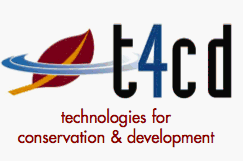Sunday, January 15, 2006
Introduction to GIS and Remote Sensing
Perhaps the most common and widespread use of an ICT in conservation management and planning is GIS. Linking environmental data by location (aerial and satellite imagery with on-the-ground surveys, for example) can provide a much greater understanding of both built and natural environments. Conservation practitioners have a particular use for this in areas such as park planning, studying wildlife movements, monitoring environmental pollution and degradation, and determining optimal environments for endangered species.
Software packages such as ArcView provide a standard by which the data can be stored and shared, and numerous organisations, from the UNEP to local wildlife authorities, provide GIS databases for public use.
Participatory GIS is of particular relevance in instances where there is clear potential for local communities living in or around conservation areas to engage in data collection. The size and usability of handheld GPS and data collection devices is crucial in such cases, and underlines the importance of innovations such as CyberTracker. Access to higher-end GIS management systems such as ArcView and Google Earth are still highly restricted, however. Making GIS data collection more widely available to stakeholders, and more relevant to them and their circumstances, are challenges which still need to be faced.
What do you think? Please use the comments feature to let us know and help to shape our discussion.
Software packages such as ArcView provide a standard by which the data can be stored and shared, and numerous organisations, from the UNEP to local wildlife authorities, provide GIS databases for public use.
Participatory GIS is of particular relevance in instances where there is clear potential for local communities living in or around conservation areas to engage in data collection. The size and usability of handheld GPS and data collection devices is crucial in such cases, and underlines the importance of innovations such as CyberTracker. Access to higher-end GIS management systems such as ArcView and Google Earth are still highly restricted, however. Making GIS data collection more widely available to stakeholders, and more relevant to them and their circumstances, are challenges which still need to be faced.
What do you think? Please use the comments feature to let us know and help to shape our discussion.
